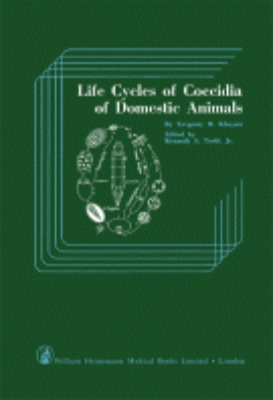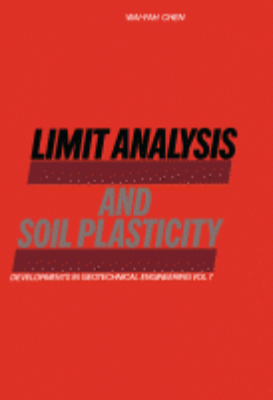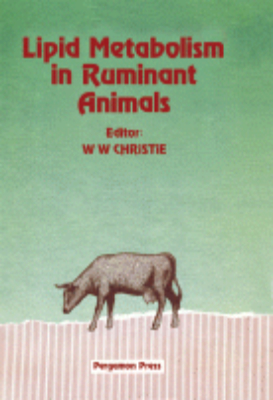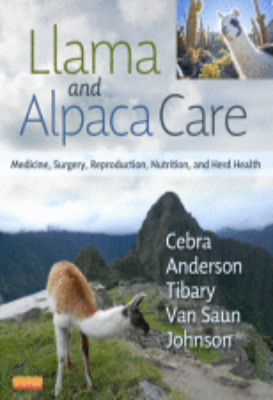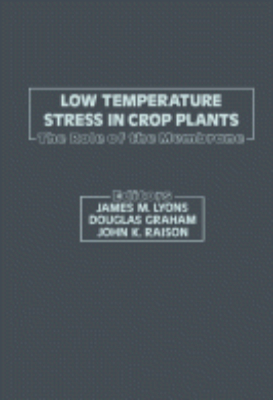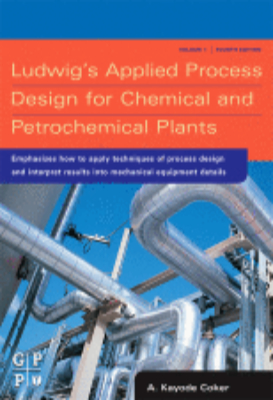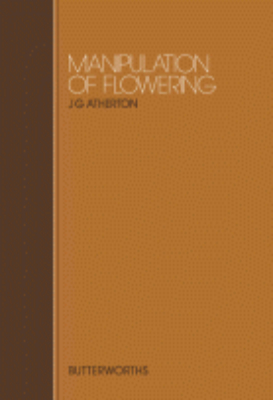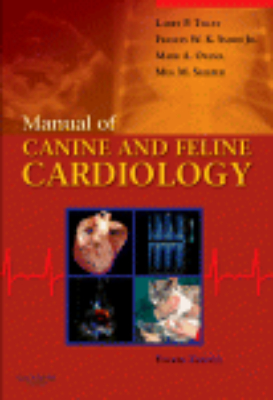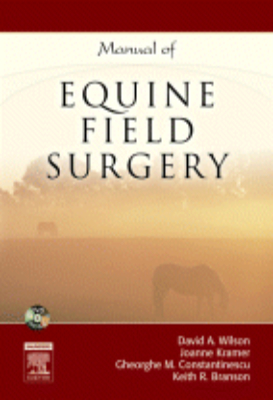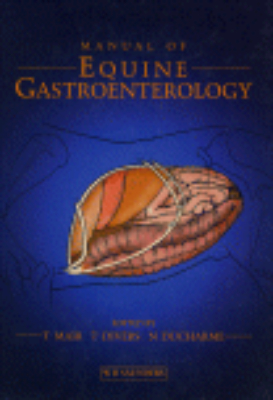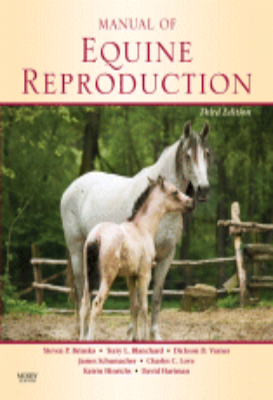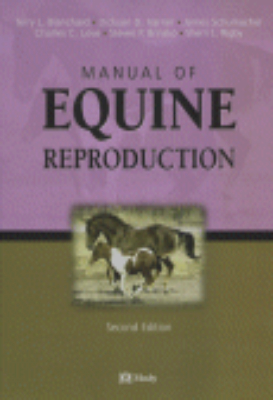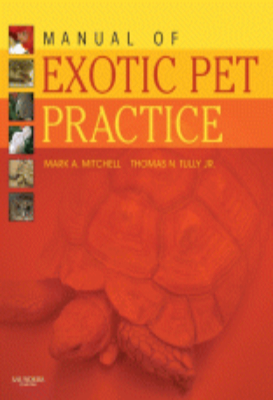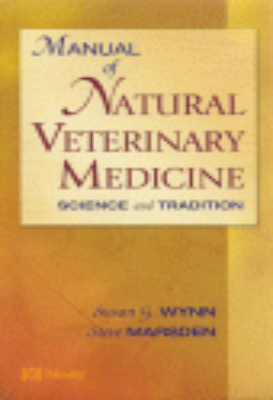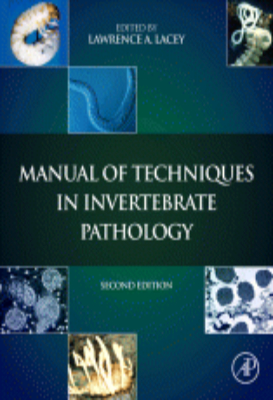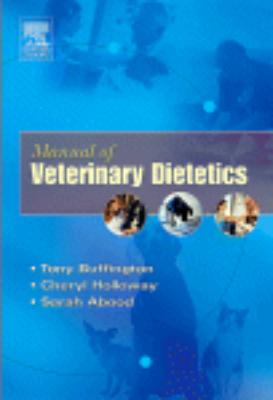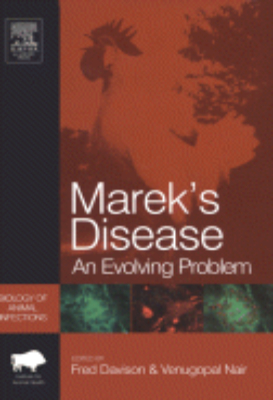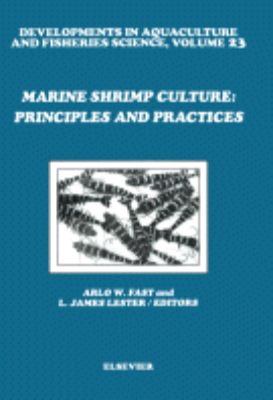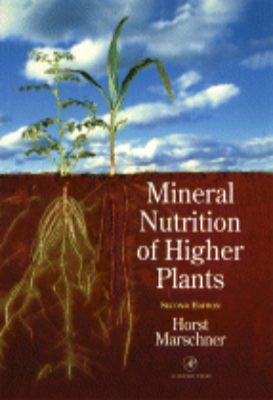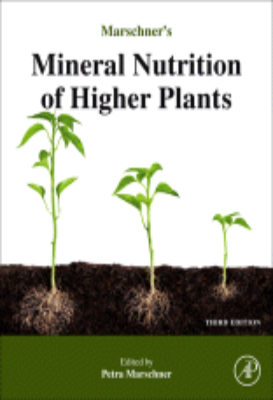ebooks
Lexicon of Plant Pests and Diseases
Lexicon of Plant Pests and Diseases is a companion book to "Elsevier's Lexicon of Parasites and Diseases in Livestock" (1964). It is based on identical principles and is developed along the same lines, viz. one part as wide as possible in scope, systematically covering all living forms which are noxious, destructive or otherwise unfavorable to economic crops, trees, and plant products; and a second part made up of indexes to the six languages (Latin, English, French, Spanish, Italian, and German). The indexes facilitate retrieval of any desired term in the basic table. The table of contents explains fully the scope of the lexicon. Entries in the lexicon are arranged alphabetically within each section, according to the Latin name of the living form. In the Appendices English is the key language.
Life Cycles of Coccidia of Domestic Animals
Life Cycles of Coccidia of Domestic Animals describes the structure and physiology of all stages of the life cycle of coccidian of domestic animals. This book discusses the area of location of coccidia in the body of the host. Organized into seven chapters, this book begins with an overview of the characteristics of the group of parasitic protozoa to which the coccidia belong. This text then describes the characteristics of development and duration of the coccidian infection. Other chapters consider the conditions necessary for the survival of the oocysts in the external environment. This book discusses as well the effects of external factors on sporulation. The final chapter deals with the conditions determining infection of the host by coccidia. This book is a valuable resource for microbiologists and parasitologists. Readers who are interested in the fundamental ecology of this group of parasitic protozoa will also find this book extremely useful.
Light and Plant Development
Light and Plant Development presents the Proceedings of the 22nd University of Nottingham Easter School in Agricultural Science. It discusses the spectral sensitivity of inhibition of flowering by light. It addresses the action spectrum for leaf enlargement and stem growth inhibition. Some of the topics covered in the book are the nature of the blue light photoreceptor in higher plants and fungi; re-examination of photochemical properties and absorption characteristics of phytochrome using high-molecular-weight preparations; and intermediates in the photoconversion of phytochrome. The high irradiance reaction is fully covered. The physiological evidence and localised responses, intracellular localisation and action of phytochrome are discussed in detail. The text describes in depth the immunological visualisation of phytochrome. The fractionation procedures and terminology are presented completely. A chapter is devoted to the photocontrol of enzyme levels. Another section focuses on the ribosomal RNA synthesis in developing leaves. The book can provide useful information to botanists, chemists, students, and researchers.
Light Emission by Plants and Bacteria
Light Emission by Plants and Bacteria deals mainly with light coming from plants and bacteria as a result of various different reactions. This book emphasizes the light emission from photosynthetic organisms. The major aim of this book is to give insight on light emission studies in plant and bacteria in terms of its physiological, biophysical, and biochemical relevance. The book is divided into six parts. Part I serves as an introduction and at the same time a historical review and development of different concepts of the emission phenomena. Part II tackles the relationship of light emission to the various photosynthetic reactions. Part III discusses the concept of bioluminescence, with a focus on bacteria and dinoflagellates. Part IV is a description of the light emission from bacteriorhodopsin and rhodopsin. Part V discusses the special light emission characteristics and their relationship to specialized pigment systems found in different bacteria and plant groups. It also reviews the fluorescence properties of photosynthetic bacteria. Lastly, Part VI basically shows the practical applications of light emission from algae as well as higher plants. This book contains not only relevant information about theories and concepts, but also experiments. Thus, it is a recommended reference to researchers and students alike in the field of cell biology, microbiology, plant physiology, biochemistry, biophysics, and agriculture.
Lipid Metabolism in Ruminant Animals
Lipid Metabolism in Ruminant Animals is a nine-chapter book that first discusses the anatomy, physiology, and microbiology of the ruminant digestive tract. Subsequent chapters center on lipid metabolism in the rumen; digestion, absorption and transport of lipids in ruminant animals; the composition, structure and function of lipids in the tissues of ruminant animals; and the effects of diet and other factors on the lipid composition of ruminant tissues and milk. Other chapters focus on lipid metabolism in the mammary gland, adipose tissue, liver, and other selected tissues of ruminant animals.
Llama and Alpaca Care
Designed for the mixed practice large animal veterinarian, veterinary students, and camelid caretakers alike, Llama and Alpaca Care covers all major body systems, herd health, physical examination, nutrition, reproduction, surgery, anesthesia, and multisystem diseases of llamas and alpacas. Written by world-renowned camelid specialists and experts in the field, this comprehensive and uniquely global text offers quick access to the most current knowledge in this area. With coverage ranging from basic maintenance such as restraint and handling to more complex topics including anesthesia and surgery, this text provides the full range of knowledge required for the management of llamas and alpacas. "..an essential text for anyone working with South American camelids." Reviewed by Claire E. Whitehead on behalf of Veterinary Record, July 2015
Low Temperature Stress in Crop Plants
Low Temperature Stress in Crop Plants: The Role of the Membrane contains the proceedings of an international seminar on ""Low Temperature Stress in Crop Plants"" held at the East-West Center, Honolulu, Hawaii, March 26-30, 1979. Organized into five parts, this book focuses on the fundamental mechanisms involved in the temperature response of crop plants. It examines the hypotheses related to the primary temperature sensor in crop plants and the mechanisms of low temperature injury. It also explores the genetic potential for cold resistance. Special topics related to the utilization of Arrhenius plots of the temperature response of plants are also discussed.
Ludwig’s Applied Process Design for Chemical and Petrochemical Plants
"This complete revision of Applied Process Design for Chemical and Petrochemical Plants, Volume 1 builds upon Ernest E. Ludwigs classic text to further enhance its use as a chemical engineering process design manual of methods and proven fundamentals. This new edition includes important supplemental mechanical and related data, nomographs and charts. Also included within are improved techniques and fundamental methodologies, to guide the engineer in designing process equipment and applying chemical processes to properly detailed equipment.All three volumes of Applied Process Design for Chemical and Petrochemical Plants serve the practicing engineer by providing organized design procedures, details on the equipment suitable for application selection, and charts in readily usable form. Process engineers, designers, and operators will find more chemical petrochemical plant design data in:Volume 2, Third Edition, which covers distillation and packed towers as well as material on azeotropes and ideal/non-ideal systems.Volume 3, Third Edition, which covers heat transfer, refrigeration systems, compression surge drums, and mechanical drivers.A. Kayode Coker, is Chairman of Chemical & Process Engineering Technology department at Jubail Industrial College in Saudi Arabia. Hes both a chartered scientist and a chartered chemical engineer for more than 15 years. and an author of Fortran Programs for Chemical Process Design, Analysis and Simulation, Gulf Publishing Co., and Modeling of Chemical Kinetics and Reactor Design, Butterworth-Heinemann. Key Features. Provides improved design manuals for methods and proven fundamentals of process design with related data and charts. Covers a complete range of basic day-to-day petrochemical operation topics with new material on significant industry changes since 1995."
Mahatma Gandhi’s Vision of Agriculture: Achievements of ICAR
The country is celebrating the 150th birth anniversary of the Father of the Nation, Mahatma
Gandhi. He led freedom struggle against British empire, which transformed him into a global
leader of masses, disadvantageous and poor people. He has shown the way of social, economic
and political transformation with small steps to serve the rural poor. Non-violence, truthfulness,
democratic institutions, village industry and people-centric approach were his main principles
and teachings for the people. He had led several movements to pursue the cause of Indian
farmers, including famous protest of Champaran in 1917, Dandi March in 1930 and Quit India
Movement in 1942. These movements motivated the farmers and rural workers to join the
freedom struggle.
Mahatma Gandhi firmly believed that prosperity of agriculture and farmers should pave the
way for economic prosperity of the country. This belief has been reaffirmed in the agricultural
development process followed in India and other developing countries. Evidences are now
available indicating that agricultural growth has significant impacts on reduction of poverty and
promotion of social and economic equity. The pandemic of COVID-19 has further established
that agriculture is a strong pillar to absorb economic shocks and build resilience to economic
growth.
The Indian Council of Agricultural Research (ICAR) has been at the forefront to propel
agricultural development through development and dissemination of technology, building
human capital and establishing the rural centres to serve the farmers. The Council has
developed partnerships with the organizations serving farmers and rural people. One of the
important components of ICAR strategy is increasing agricultural productivity in harmony
with nature. The needs of unprivileged farmers, marginal production environments, and rural
youth have been accorded high priority in research programs of the Council. Similarly, gender
mainstreaming, outscaling of farmers? innovations, farmers? participatory approach, and
institutional change for higher efficiency has been corner stones of research approach of ICAR.
In other words, the Council has followed the principles of Mahatma Gandhi to make Indian
agriculture prosperous, empower farmers, and strengthen village institutions. The efforts made
by the Krishi Vigyan Kendras to develop skills of rural women and small farmers, and to
provide services at the doorstep of farmers have contributed to the Gandhian vision.
This publication documents the major contributions of ICAR to promote sustainable
development, technological empowerment of people in inaccessible areas, enhance value of
farm produce, and promote rural livelihood options. Conservation of biodiversity, soil and
water, yield improvement of millets in hill areas, improvement of indigenous cattle, goat
development, support for fishermen, and food processing options for households are some of
the notable examples.
I compliment ICAR for bringing out this publication that shall be useful for policy makers and
public agencies to take the task of agriculture and rural development on the Gandhian way. This
is the need of the hour when there is weakening of the values of rural communities and rising
pressure on natural resources.
Mammalian Cytogenetics and Related Problems in Radiobiology
Mammalian Cytogenetics and Related Problems in Radiobiology covers the proceedings of a symposium held in Sao Paulo and Rio de Janeiro, Brazil in October 1962. The book focuses on the processes, methodologies, and approaches involved in mammalian cytogenetics and radiobiology. The selection first offers information on the nutrition and metabolism of cultured mammalian cells, blood technique and human chromosomes, and DNA replication in human chromosomes. Discussions focus on replication of heterochromatin in the human male; difficulties involved in the study of DNA synthesis in human chromosomes; and perspectives for future research. The text then ponders on the progress in the utilization of cell culture techniques for studies in mammalian and human somatic cell genetics and modification of radiation effects in the Ehrlich ascites tumor by oxygen or sodium azide. The manuscript examines experimental studies on mammalian chromosome aberrations, chromosome breakage in vitro, and survival of human cells in tissue culture after irradiation with densely and sparsely ionizing radiation. The text then elaborates on the observations on the morphology and behavior of normal human chromosomes, human pachytene chromosomes, and abnormalities of autosomes. The selection is a vital reference for readers interested in mammalian cytogenetics and radiobiology.
Managing Agricultural Greenhouse Gases
Global climate change is a natural process that currently appears to be strongly influenced by human activities, which increase atmospheric concentrations of greenhouse gases (GHG). Agriculture contributes about 20% of the worlds global radiation forcing from carbon dioxide, methane and nitrous oxide, and produces 50% of the methane and 70% of the nitrous oxide of the human-induced emission. Managing Agricultural Greenhouse Gases synthesizes the wealth of information generated from the GRACEnet (Greenhouse gas Reduction through Agricultural Carbon Enhancement network) effort with contributors from a variety of backgrounds, and reports findings with important international applications.
Manipulation of Flowering
Manipulation of Flowering presents the edited proceedings of the 45th University of Nottingham Easter School in Agricultural Science held at Sutton Bonington in England on April 7-10, 1986. This book is organized into eight sections. The first main section examines the measurement and prediction of flowering and analyzes how best to measure flowering when the aim is either to assist physiological interpretations or construct predictive models. The following sections explore juvenility, the nature of determination in meristems, vernalization, photoperiodic induction and flower evocation, and initiation and development to anthesis. Each of the main sections provides an analysis of the flowering problems and a critical view of how to achieve a better understanding and use of the physiology of flowering. This book will be of interest to crop researchers, plant physiologists, geneticists, and others interested in understanding flowering manipulation.
Manual of Canine and Feline Cardiology
The most effective, practical approach to the recognition and management of cardiovascular and cardiopulmonary medicine, MANUAL OF CANINE AND FELINE CARDIOLOGY, 4th Edition takes a user-friendly approach to the challenges and conditions you encounter in everyday practice. This completely revised and updated edition includes vital information on diagnostic modalities and techniques, therapeutic options, surgical procedures, and pharmaceutical management of the dog and cat cardiac patient. This invaluable, practical reference covers the full breadth of canine and feline cardiology diagnosis and management in a straightforward and clinically focused format.
Manual of Equine Field Surgery
This practical manual provides thorough explanations and step-by-step guidance for 34 procedures that can be performed in less than an hour in a standing sedated patient without the use of special equipment. Three-dimensional, anatomical line drawings, high-quality photographs, and a companion DVD visually demonstrate key concepts and techniques.
Manual of Equine Gastroenterology
This book provides the equine expert and general veterinary practitioner with a complete review of the latest information on all aspects of equine gastroenterology. Edited by an international team of equine specialists and with over 55 contributors from the USA and Europe, it provides the most up-to-date information on a wide range of conditions such as colic, hepatobiliary disease, oesophageal disorders, diarrhoea, gastrointestinal parasites and many more. With detailed chapters on diagnosis and clinical examination, medical and surgical treatment and management of complications, it gives veterinarians all the information they need to diagnose and treat any gastrointestinal problem in the horse or foal.
Manual of Equine Reproduction
Now in full color, Manual of Equine Reproduction, 3rd Edition provides a comprehensive look at the reproductive management of horses, including management of stallions, pregnant mares, and neonatal foals. Expert authors use a concise, practical approach in discussing improved therapies and treatments in equine breeding. Youll enhance your skills and knowledge with this books detailed coverage of techniques used in reproductive examination, breeding procedures, pregnancy diagnosis, foaling, and reproductive tract surgery.
Manual of Equine Reproduction: 2003
Written by acknowledged experts in the field, this authoritative text presents a comprehensive overview of reproductive management of horses, including management of stallions, pregnant mares, and neonatal foals. Discussions are concise and practical, with detailed information on techniques used in reproductive examination, breeding procedures, pregnancy diagnosis, foaling, and reproductive tract surgery. This outstanding 2nd edition features a new chapter on the use of breeding records to evaluate stallion fertility and improve management of breeding stallions. High-quality photographs and line drawings - many new to this edition - clearly depict procedures.
Manual of Exotic Pet Practice
The only book of its kind with in-depth coverage of the most common exotic species presented in practice, this comprehensive guide prepares you to treat invertebrates, fish, amphibians and reptiles, birds, marsupials, North American wildlife, and small mammals such as ferrets, rabbits, and rodents. Organized by species, each chapter features vivid color images that demonstrate the unique anatomic, medical, and surgical features of each species. This essential reference also provides a comprehensive overview of biology, husbandry, preventive medicine, common disease presentations, zoonoses, and much more. Other key topics include common health and nutritional issues as well as restraint techniques, lab values, drug dosages, and special equipment needed to treat exotics.
Manual of Natural Veterinary Medicine
This practical guide synthesizes the types of treatment available for specific diseases. It is a handy reference that provides readers with an understanding of complementary and alternative treatment options for more than 130 common disease states and describes a variety of possible approaches to small animal disorders. Concentrating on nutrition, herbs, traditional Chinese medicines, and physical therapies, the authors present both tradition- and evidence-based therapies for disorders not always responsive to conventional therapies.
Manual of Techniques in Invertebrate Pathology
"Manual of Techniques in Invertebrate Pathology, Second Edition, describes a wide range of techniques used in the identification, isolation, propagation/cultivation, bioassay, quantification, preservation, and storage of the major groups of entomopathogens, including entomophthorales, entomopathogenic fungi, entomopathogenic bacteria of the Bacilli, Nematode parasites, and pathogens and parasites of terrestrial molluscs. The book presents the perspectives of an international group of experts in the fields of invertebrate pathology, including microbiology, mycology, virology, nematology, biological control, and integrated pest management. Organized into 15 chapters, the book covers methods for the study of virtually every major group of entomopathogen, as well as methods for discovery and diagnosis of entomopathogens and the use of complementary methods for microscopy. It discusses the use of molecular techniques for identifying and determining phylogeny, factors that contribute to resistance to entomopathogens, and several other aspects of the science of invertebrate pathology. It also explains initial handling and diagnosis of diseased invertebrates, basic techniques in insect virology, and bioassay of bacterial entomopathogens against insect larvae. In addition, the reader is introduced to the use of bacteria against soil-inhabiting insects and preservation of entomopathogenic fungal cultures. The remaining chapters focus on research methods for entomopathogenic microsporidia and other protists, how the pathogenicity and infectivity of entomopathogens to mammals are tested, and preparations of entomopathogens and diseased specimens for more detailed study using microscopy. Experienced insect pathologists, biologists, entomologists, students, biotechnology personnel, technicians, those working in the biopesticide industry, and government regulators will find this manual extremely helpful. Key Features. Step-by-step instructions for the latest techniques on how to isolate, identify, culture, bioassay and store the major groups of entomopathogens. New edition fully updated to address changes in the taxonomy of the vast majority of taxa. Discussion of safety testing of entomopathogens in mammals and also broader methods such as microscopy and molecular techniques. Provides extensive supplemental literature and recipes for media, fixatives and stains"
Manual of Veterinary Dietetics
This comprehensive guide provides diet and feeding recommendations for both healthy and sick animals. Recommendations are based on a physical and nutritional assessment of the patient, and the wishes and abilities of clients. Suggested dietary interventions are assessed based on indications, possible adverse reactions, contradictions, and ongoing evaluation. The book also raises questions concerning the appropriateness of various commercial foods, assesses the validity of advertising claims, and addresses requests for recipes for homemade foods. The ultimate goal is to sustain the nutritional health of pets without adversely affecting the quality of the bond between clients and their pets. Coverage extends to dogs, cats, and basic exotic pets.
Marek’s Disease
Mareks disease is a form of cancer of poultry caused by an important herpesvirus (MDV). It continues to be a threat to poultry health and welfare and worldwide losses are estimated to be US$ 1 billion annually. Marek's Disease provides a timely review of the problems of Marek's disease with descriptions of the complex viral life cycle, how MDV targets different types of white blood cells, and details of the virus structure, its genes and proteins.
Marine Faunal Diversity in India
"More than 70% of the earths surface is covered by water, making it an ideal and abundant resource for studying species diversity, faunal communities, and ecosystems. Indias massive coastline (5,044 miles) means it plays a major role in housing these faunal communities. Of the 32 animal phyla, 15 are represented in Indias marine ecosystem, covering more than 15,000 species. Marine and coastal ecosystems of India provide supporting services in the form of wide range of habitats. Major ecosystems such as estuaries, mangroves, coral reefs, lagoons, seaweeds and sea grasses serve as nurseries for both inshore and offshore fishes and others, many of which are supposed to be commercially exploited. Marine Faunal Diversity in India describes different marine faunal group ranges from sponges, corals, mollusks, crabs, fishes, reptiles, birds, marine mammals, mangrove fauna and tsunami impact on marine faunal diversity. The chapters, written by reputed experts in their respective fields, illustrate diversity and distribution of marine faunal communities. Key aspects of the ecology and conservation of this important ecosystem are also discussed. Marine Faunal Diversity in India provides marine biologists and related researchers with access to the latest research and field studies from this major region. Key Features. Provides the latest field research on marine faunal diversity throughout the vast and species-rich Indian region. Brings together expertise from top marine biology researchers in the country. Covers a diverse array of aquatic environments, including coastal and island areas. Discusses conservation ecology of marine faunal groups"
Marine Shrimp Culture
The commercial culture of marine shrimp in tropical areas has grown at a phenomenal rate during the last 10 to 15 years. This book provides a description of principles and practices of shrimp culture at one point in time and documents both historical events and conditions now. It also tries to look into the future. The volume provides both practical information about shrimp culture, as well as basic information on shrimp biology. It should be of value to researchers, consultant practitioners and potential investors in the marine shrimp culture industry.
Marschner’s Mineral Nutrition of Higher Plants: 1995
"An understanding of the mineral nutrition of plants is of fundamental importance in both basic and applied plant sciences. The Second Edition of this book retains the aim of the first in presenting the principles of mineral nutrition in the light of current advances. This volume retains the structure of the first edition, being divided into two parts: Nutritional Physiology and Soil-Plant Relationships. In Part I, more emphasis has been placed on root-shoot interactions, stress physiology, water relations, and functions of micronutrients. In view of the worldwide increasing interest in plant-soil interactions, Part II has been considerably altered and extended, particularly on the effects of external and interal factors on root growth and chapter 15 on the root-soil interface. The second edition will be invaluable to both advanced students and researchers. Key Features. @introbul:Key Features. @bul:* Second Edition of this established text. Structure of the book remains the same. 50% of the reference and 50% of the figures and tables have been replaced. Whole of the text has been revised. Coverage of plant (soil interactions has been increased considerably)"
Marschner’s Mineral Nutrition of Higher Plants: Third Edition 2012
"An understanding of the mineral nutrition of plants is of fundamental importance in both basic and applied plant sciences. The Third Edition of this book retains the aim of the first in presenting the principles of mineral nutrition in the light of current advances. This volume retains the structure of the first edition, being divided into two parts: Nutritional Physiology and Soil-Plant Relationships. In Part I, more emphasis has been placed on root-shoot interactions, stress physiology, water relations, and functions of micronutrients. In view of the worldwide increasing interest in plant-soil interactions, Part II has been considerably altered and extended, particularly on the effects of external and interal factors on root growth and chapter 15 on the root-soil interface. The third edition will be invaluable to both advanced students and researchers. Key Features. Third Edition of this established text. Structure of the book remains the same. 50% of the reference and 50% of the figures and tables have been replaced. Whole of the text has been revised. Coverage of plant (soil interactions has been increased considerably)"
Matthews’ Plant Virology
It has been ten years since the publication of the third edition of this seminal text on plant virology, during which there has been an explosion of conceptual and factual advances. The fourth edition updates and revises many details of the previous editon, while retaining the important older results that constitute the field's conceptual foundation. Key Features @introbul:Key features of the fourth edition include: @bul:* Thumbnail sketches of each genera and family groups * Genome maps of all genera for which they are known * Genetic engineered resistance strategies for virus disease control * Latest understanding of virus interactions with plants, including gene silencing * Interactions between viruses and insect, fungal, and nematode vectors * New plate section containing over 50 full-color illustrations


